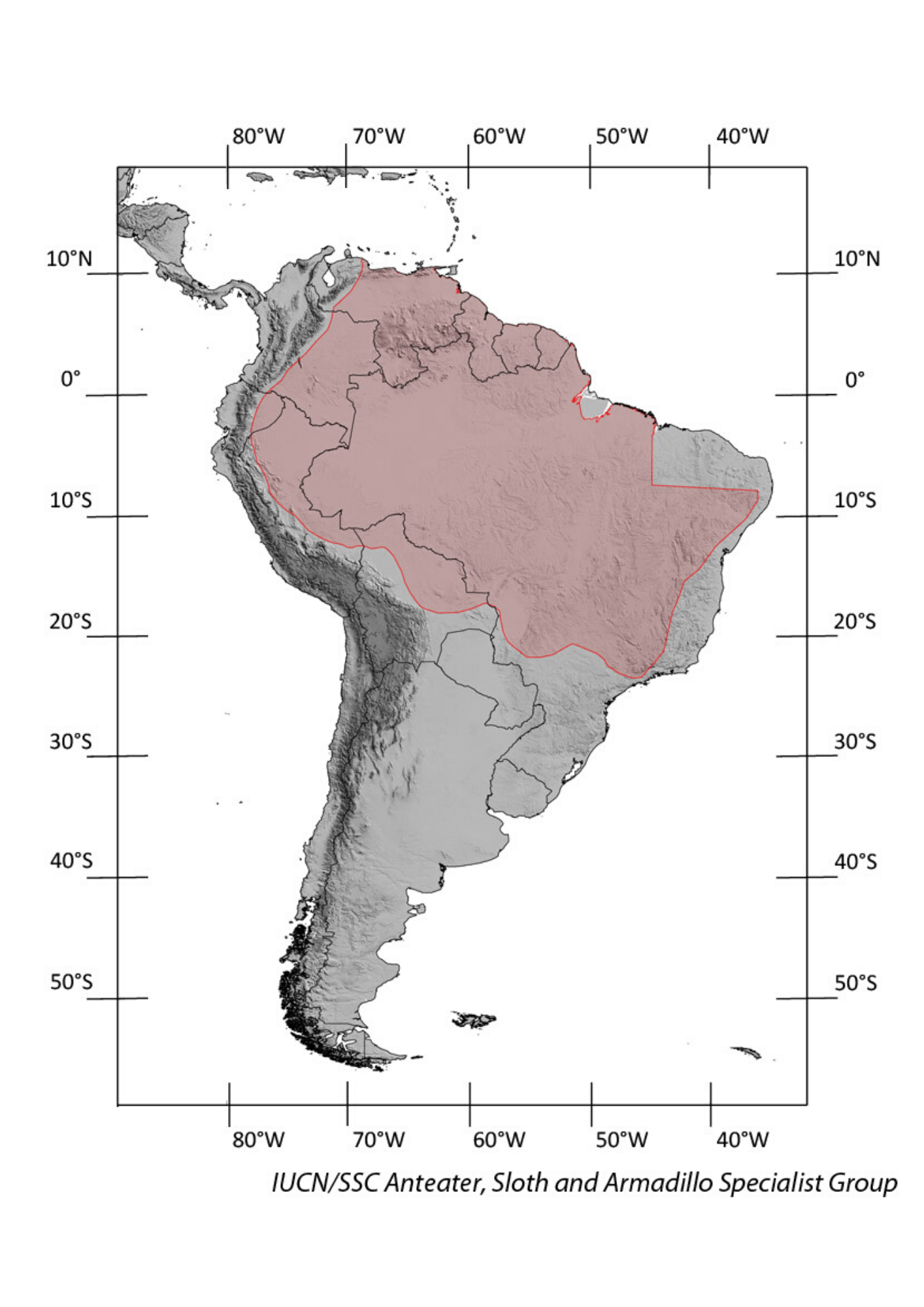Southern naked-tailed armadillo
(Cabassous unicinctus)
other common names
–
Taxonomy
Order: Cingulata
Family: Chlamyphoridae
Subfamily: Tolypeutinae


description
There are two subspecies of C. unicinctus that notably differ from each other, because of which it is worth describing them separately here:
Cabassous u. unicinctus has a head-body length of 35–44 cm, a tail of 16–20 cm length, and it weighs 2.5–3.6 kg. Its carapace is dark grey, with a clear, pinkish band around its lower part.
In C. u. squamicaudis, the head-body length is 29–34 cm, the tail length 9–14 cm, and the weight 1.6–1.8 kg. Its carapace is uniformly dark grey.
Both subspecies have 10–13 bands on their carapace, long claws, and a grey tail that is naked, i.e., it lacks the complete armor present in other armadillos although there may be some isolated scales in C. u. squamicaudis.

range
This species is found east of the Andes. The subspecies C. u. unicinctus occurs in Colombia, Venezuela, the Guianas, northern Brazil, Ecuador, and northeastern Peru, north of the Amazon river. The other subspecies, C. u. squamicaudis, can be found in eastern Peru, northern and eastern Bolivia, eastern Paraguay, and in Brazil south of the Amazon river. Its presence in northeastern Brazil is doubtful and needs to be confirmed.

reproduction
Reproduction of this species is aseasonal. It presumably gives birth to a single young per litter.

diet
The southern naked-tailed armadillo is an insectivore that mainly feeds on ants and termites.

HaBITAT and ECOLOGy
Cabassous unicinctus inhabits tropical lowland, rainforest, gallery forest, forest patches, Cerrado savannas, and floodable grasslands. It possibly occurs in secondary forest and has been recorded in pasturelands and in eucalyptus plantations, but not in agricultural areas.
This solitary, primarily fossorial species can be nocturnal or diurnal. It often constructs burrows in termite mounds or riverbanks. It rotates its body while digging, forming a round burrow. Densities have been estimated at 27–120 individuals per km².

curious facts
The subspecies C. u. unicinctus looks very similar to the giant armadillo because its carapace is grey with a pinkish border. As a consequence, adult individuals are often mistaken for juvenile giant armadillos. The two can easily be told apart by looking at their tail.

threats
There are no known major threats to this species. In some areas, the species is subject to some hunting and habitat loss.

Population trend
Unknown.

conservation status
Cabassous unicinctus is listed as Least Concern in view of its wide distribution, presumed large population, its occurrence in a number of protected areas, and because it is unlikely to be declining fast enough to qualify for listing in a threatened category.